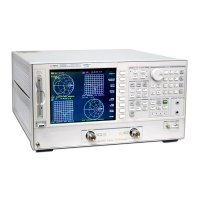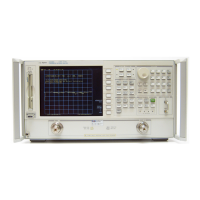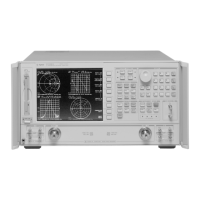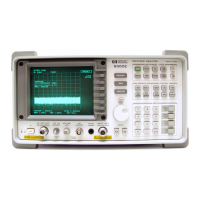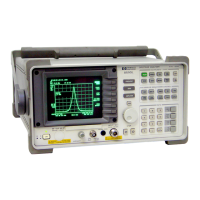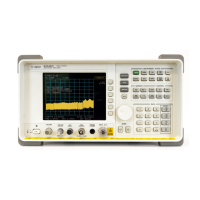Index
Index-9
response resolution, 3-32
response
calibration, 2-28
error correction for reflection
measurements
, 6-12
error correction for transmission
measurements
, 6-14
magnitude, 1-7
resolution, 3-32
response and isolation calibration, 7-56
response and isolation error correction
for reflection measurements, 6-19
response calibration, 7-56
restarting a calibration, 6-5
reverse isolation, 1-64
reviewing the limit line segments, 1-82
RF feedthrough, 2-46
RF frequency range, 2-22
using the calculation, 2-22
using the mixer measurement
diagram
, 2-17, 2-23
RF range
power meter calibration, 2-23
RF, defining, 2-7
ripple limit testing, 1-85–1-94
ripple limits
editing, 1-88–1-90
running the test, 1-90–1-94
setting, 1-85–1-88
ripple test
absolute value, 1-93
displaying limits, 1-91
displaying values, 1-92
frequency bands, 1-87
margin value, 1-94
message color, 1-91
starting and stopping, 1-90
running a bandwidth test, 1-97–1-100
running a limit test, 1-82
running a sequence, 1-103
running the ripple limits test, 1-90–1-94
S
S11 and S22 one-port calibration, 7-57
S2P data format, 4-40
safety considerations, 8-5
before applying power, 8-5
compliance with German FTZ
emissions requirements
, 8-8
compliance with German noise
requirements
, 8-8
general, 8-7
safety earth ground, 8-5
servicing, 8-6
safety earth ground, 8-5
safety symbols, 8-4
sample-and-sweep correction mode,
using
, 6-36
sampler/IF correction, 7-7
saving
calibration data, 6-5, 7-66
data trace, 1-19
instrument state, 4-36, 7-66
measurement results, 4-37
measurement results graphically, 4-44
modified calibration kits, 7-66
to a disk, 7-66
saving a file
solving problems, 4-51
saving and recalling instrument states,
4-34
places where you can save, 4-34
what you can save to a computer, 4-35
what you can save to a floppy disk,
4-35
what you can save to the analyzer’s
internal memory
, 4-34
saving measurement results
ASCII data formats, 4-39
instrument state files, 4-44
scale and offset, 7-9
scale, choosing, 4-15
searching for specific amplitude, 1-40
segment menu, 7-17
segment power, setting, 7-19
selecting
auto-feed, 4-13
gate shape, 3-36
line types, 4-15
pen numbers and colors, 4-14
selecting sweep modes, 7-20
sending the exit HPGL mode and form
feed sequence to the printer
, 4-24
sending the HPGL initialization
sequence to the printer
, 4-24
sending the plot file to the printer, 4-24
sequence
changing the title, 1-105
clearing from memory, 1-105
creating, 1-101
decision making menu, 1-114
editing, 1-103
generating files in a loop counter
example, 1-118
in-depth information, 1-108
jumps to itself, 1-114
limit test example, 1-120
loading from a disk, 1-107
loop counter example, 1-117
naming files, 1-106
printing, 1-107
purging from a disk, 1-107
running, 1-103
size, 1-109
stopping, 1-103
storing to disk, 1-106
sequencing
programs, 1-123
special functions menu, 1-114
test, 1-101
service menu (ECal), 6-67
servicing, 8-6
setting
auto sweep time mode, 5-11
frequency range for time domain low
pass
, 3-15
gate, 3-35
setting ripple limits, 1-85–1-88
setting segment IF bandwidth, 7-19
setting segment power, 7-19
setting the sweep type, 5-11
setting up bandwidth test limits,
1-95–1-97
shipment for service, 8-2
sidelobes, 3-27
single connection multiple
measurement configuration, 1-122
controlling external switches, 1-122
single page plots, outputting using a
printer, 4-24
single point limits, 1-81
single-channel operation, 1-58, 7-88
sloping limit line, 1-79
small signal transient response,
measuring
, 3-19
smith chart format, 7-28
smith chart markers, 1-34
smoothing, 7-9, 7-37
softkey
4 Param Displays, 1-18
channel position, 1-17
solving problems with printing or
plotting
, 4-33
solving problems with saving or recalling
files, 4-51
using an external disk drive, 4-51
source attenuator switch protection,
7-14
repetitive switching of the attenuator,
7-14
source match, 7-41
source match and load match, 7-71
source mismatches, minimizing, 2-4
source power, setting, 1-5
source step attenuator, 7-4
S-parameter menu
analog in menu, 7-23
conversion menu, 7-23
S-parameters, 7-21
S-parameter menu, 7-23
